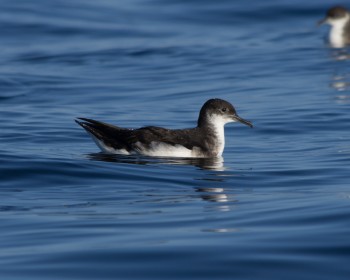Akiko Shoji (Department of Zoology, Oxford University, UK) and colleagues have published early on-line in the Journal of Experimental Biology on foraging patterns of breeding Manx Shearwaters Puffinus puffinus.
The paper’s abstract follows:
“The optimal allocation of time and energy between one own’s survival and offspring survival is critical for iteroparous animals but creates a conflict between what maximises the parent's fitness and what maximises the offspring's. For central-place foragers, provisioning strategies may reflect this allocation, while the distance between central-places and foraging areas may influence the decision. Nevertheless, few studies have explored the link between life history and foraging in the context of resource allocation. Studying foraging behaviour alongside food load rates to chicks provides a useful system for understanding the foraging decisions made during parent offspring conflict. Using simultaneously deployed GPS and time-depth recorders, we examined the provisioning strategies in free-living Manx shearwaters Puffinus puffinus, which were caring for young. Our results showed a bimodal pattern where birds alternate short and long trips. Short trips were associated with higher feeding frequency and larger meals than long trips, suggesting that long trips were performed for self-feeding. Furthermore, most foraging was carried out within 100 km of sea fronts. Critically, these empirical findings are supported by a simple model based on patch quality and travel time showing that a bimodal foraging trip duration optimises feeding rates.”

Manx Shearwater, photograph by Nathan Fletcher
Reference:
Shoji, A., Aris-Brosou, S., Fayet, A., Padget, O., Perrins, C. & Guilford, T. 2015. Dual foraging and pair-coordination during chick provisioning by Manx shearwaters: empirical evidence supported by a simple model. Journal of Experimental Biology doi:10.1242/jeb.120626.
John Cooper, ACAP Information Officer, 02 June 2015

 English
English  Français
Français  Español
Español